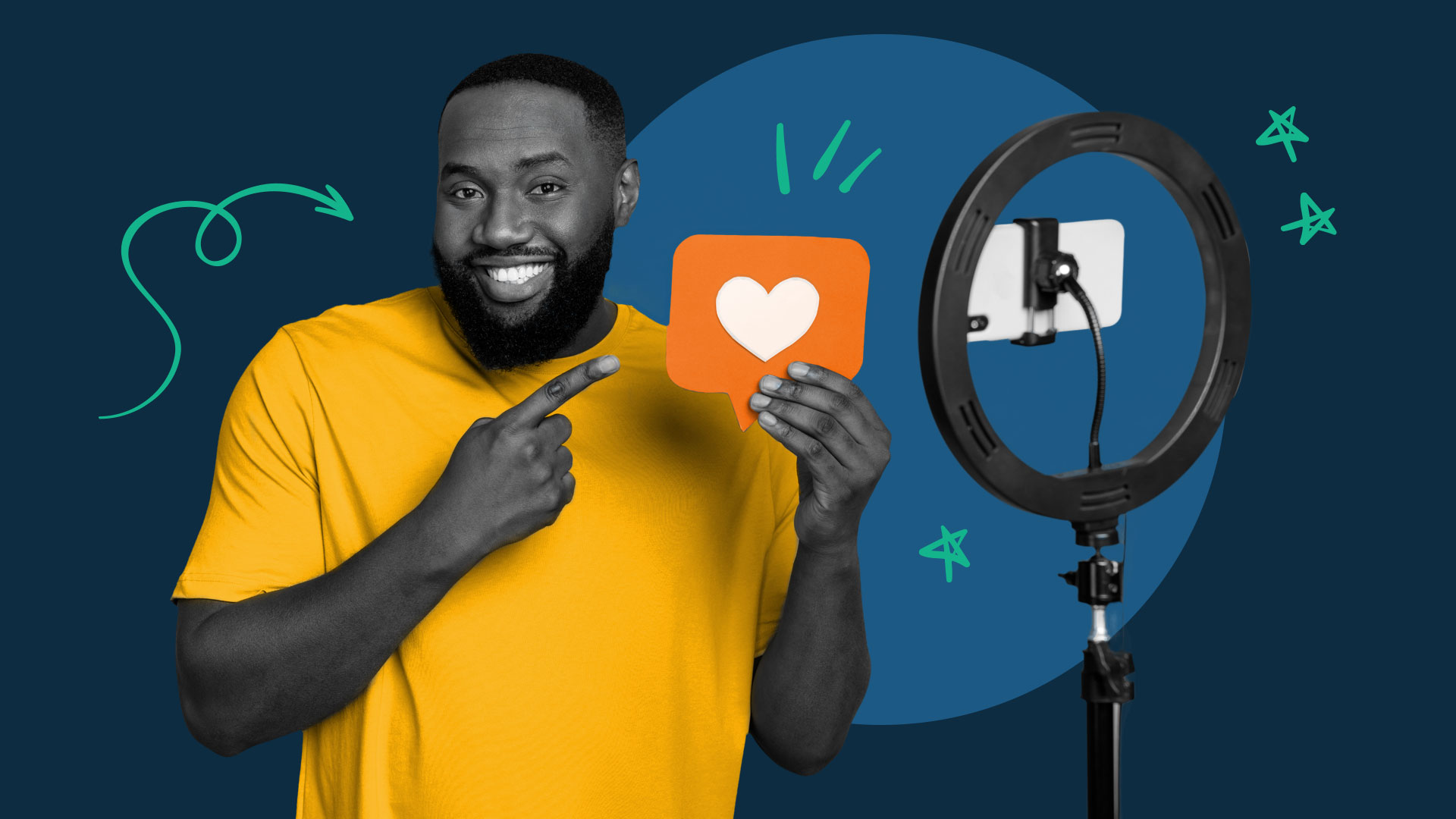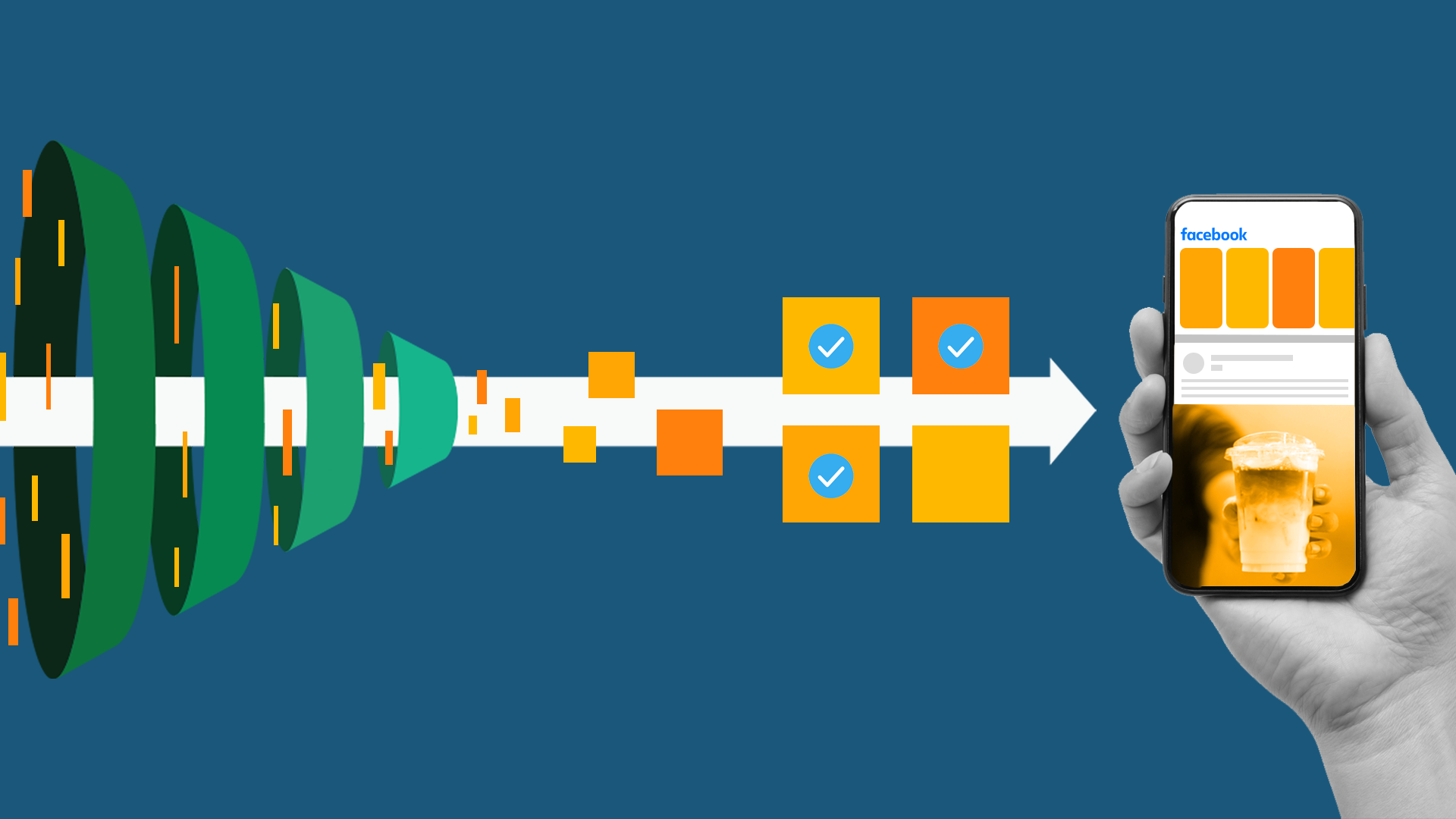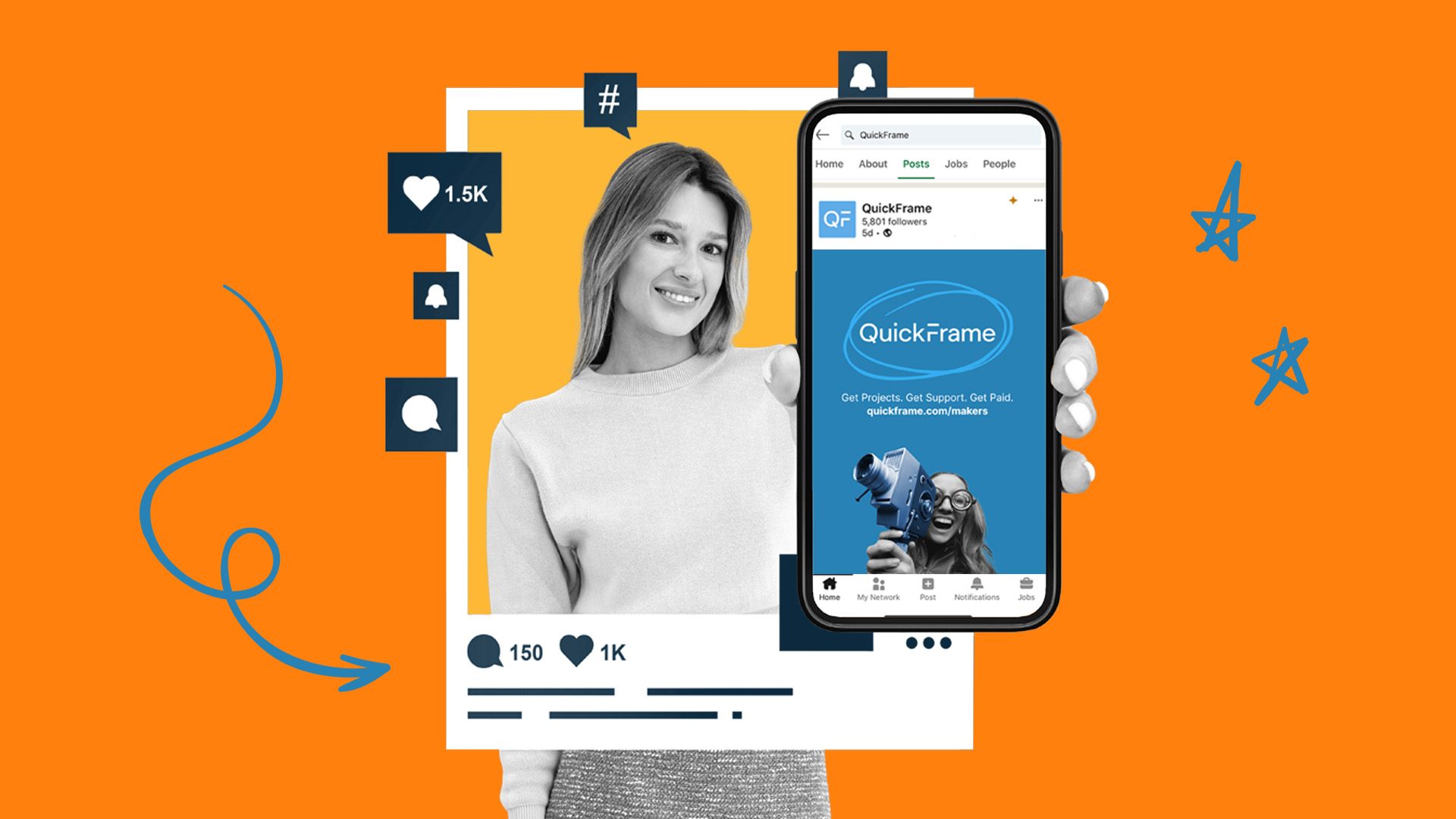Influencer Marketing: Complete Guide for 2025

Influencer marketing is a dynamic advertising strategy that leverages the credibility and reach of individuals with strong social media followings. And to say that it represents a rapidly growing trend would be a huge understatement.
In 2024, 82.7% of EMARKETER respondents said they were utilizing influencer marketing in their strategy — and this number is expected to continue rising, reaching an estimated 86% in 2025.
With that in mind, your brand is likely looking to add influencers to your marketing mix so you can join in on the concept and reap its rewards. Here, we’re going to cover everything you need to know about social media influencer marketing.
What Is Influencer Marketing?
Influencer marketing encompasses the process of partnering with individuals who boast a strong social media presence to promote your products or services. These big-name creators (or small-name — micro-influencers can be powerful allies, too) will produce content that has an authentic feel and an engaging tone to effectively spur your audience to take action.
Most influencers publish user-generated content (UGC), which has an inherently low-production vibe. The quality of the recordings themselves is top-notch, but the posts aren’t over-produced, which is what makes consumers trust them. They don’t come off as overtly sales-y or pushy. Instead, they appear as genuine recommendations from a trusted personality.
Before we continue, this guide is about influencer marketing, broadly. If you’re in the B2B space, check out our guide on B2B influencer marketing.
Benefits of Influencer Marketing
Successful social media influencer marketing can offer an array of benefits for your business. Some of the top benefits of influencer marketing include:
Increased Brand Awareness
One of the primary perks of influencer marketing is being able to borrow a social media personality’s reach and reputation. They can get your products or services in front of thousands of new consumers, increasing your visibility. This can help you reach potential customers who may not have been aware of your brand otherwise.
Influencers can also introduce your products or services to their followers in an organic and genuine way, making it more likely audiences will take notice and remember your brand.
Targeted Audience Reach
Influencers often have niche audiences that share similar interests and demographics, which can help you target specific groups more effectively. The trick is to find influencers whose followers align with your ideal customer base while simultaneously minimizing overlap with your core audience. In doing so, you can get more bang for your marketing buck by ensuring your content gets viewed by the right prospects.
Enhanced Credibility and Trust
While you want to build organic trust with your target audience, doing so takes time. Borrowing the credibility of popular influencers can jumpstart the process and make viewers more inclined to try your products.
Recent research supports that notion, citing a notable 69% of consumers trust the recommendations they receive from their favorite content creators more than information coming directly from the brand.
Higher Engagement Rates
Influencers build their followings by consistently posting engaging content. They’ve already found a tone and style that resonates with users and that gives them an edge when it comes to driving engagement.
An effective influencer can create content their audience will love while organically showing off brands, products, and services. By blending engagement and product promotion, influencers help you spread your message in a meaningful way.
Cost-Effective Marketing Strategy
Partnering with influencers can be cost-effective, especially when compared to traditional advertising channels like pay-per-click (PPC) ads. While celebrities and other mega-influencers will come with a hefty price tag, micro- and nano-influencers can be more budget-friendly while still providing plenty of value.
That’s primarily because smaller influencers tend to have highly engaged niche audiences. Even then, earlier-career and part-time influencers may be more willing to partner with you in exchange for free products, commission-based agreements, or other flexible terms that help keep your marketing budget intact.
Once you’ve proven the concept on a smaller scale, you can add more partners or seek out influencers with larger followings.
How Does Influencer Marketing Work?
Here’s a quick overview of how the influencer marketing process typically works:
- Identify your goals: Determine what you want to achieve before you seek an influencer partnership.
- Research partners: Find social media personalities who can support your goals and deliver results.
- Develop a strategy: Create a plan for integrating your new partner into your marketing mix.
With a plan in place, reach out to a few of your top picks and negotiate favorable terms. Make sure you discuss everything from content guidelines to compensation and campaign timelines up front.
Once you’ve selected a partner, work with them to create engaging content that promotes your brand. Though it is true that influencers need plenty of autonomy, they also need your support to keep content in line with your values and goals.
The most important step, however, involves monitoring and measuring the results of influencer campaigns. Analyze several complementary metrics to determine whether the marketing content is pushing you closer toward your goals and delivering a solid return on investment (ROI).
Types of Influencer Marketing
As alluded to earlier, social media influencers are grouped into the following categories based on the size of their following and their average engagement levels. Each of these offers different benefits and reach:
Mega- or Celebrity Influencers
A mega-influencer typically has an incredibly wide reach, regularly delivering content to over one million followers. As such, they can introduce your products or services to a vast audience, but their services often come with a premium price tag and may have lower engagement rates.
Nevertheless, collaborating with a celebrity influencer might be a good move if you need to launch a large-scale campaign to boost brand awareness. For instance, if you’re preparing to release a new product, a mega-influencer can efficiently stir up some buzz and help you generate strong sales volume.
Macro-Influencers
Macro-influencers have follower counts ranging from 100,000 to one million. They often have established authority in their niche and can provide significant reach while still maintaining strong engagement rates.
Teaming up with a macro-influencer offers a good balance between reach, engagement, and cost. They may also be open to an affiliate-style revenue-sharing campaign, where brands provide them with a unique link their followers can use that will attribute any sales made through it to their content.
Micro-Influencers
Micro-influencers have between 10,000 and 100,000 followers and are known for having highly engaged and loyal audiences within specific niches. Additionally, micro-influencers are often seen as more relatable and trustworthy, making their recommendations highly effective.
Collaborating with a micro-influencer can be easy on your marketing budget. Still, you’ll want to make sure that your partner has a following whose interests and pain points align with that of your ideal customer base.
Nano-Influencers
Nano-influencers have fewer than 10,000 followers. Despite the smaller follower counts, they often have a strong connection to their (usually close-knit) communities.
If you are new to influencer marketing or have a very limited budget, working with nano-influencers is the way to go. You can connect with their loyal followers and transform some of them into quality leads for your sales team.
Influencer Marketing Channels
Influencer marketing is a significant part of social media today. With that in mind, here are the influencer marketing channels where this strategy is most impactful:
- Instagram: One of the most popular platforms for influencer marketing, thanks to its variety of posting options
- YouTube: Allows influencers to provide detailed video production and in-depth product exposure
- TikTok: Short-form video content that’s engaging and snappy, allowing you to connect with more viewers
- Facebook: A viable option for generating brand awareness
- X (Formerly Twitter): Helps drive engagement through posts and reposts
While many brands and their partners gravitate toward Instagram, there aren’t any one-size-fits-all options when choosing a platform or partner for your influencer marketing campaign. As such, it’s wise to give each of the platforms listed above a fair shot.
Influencer Marketing Metrics & KPIs
Measuring the success of your influencer marketing campaign is vital. Here are some specific key influencer marketing metrics you need to keep your eye on:
- Engagement rate: Likes, comments, shares, and other interactions with the influencer’s content
- Reach: The number of unique individuals who have seen the content
- Impressions: Total number of content views
- Follower growth: Increase in your brand’s social media followers
- Website traffic: Visits to your website generated by the influencer’s content
- Conversions: Purchases or sign-ups resulting from the campaign
- ROI: Overall financial return compared to your costs
Each of these KPIs provides a piece of the puzzle, and combining them can give you a holistic view of the campaign’s overall performance.
Influencer Marketing Best Practices
Before you dive into the world of influencer marketing, it’s important to familiarize yourself with some established best practices to make the most of your efforts.
First, you’ll want to select the right partner whose audience aligns with your target market will lay the foundation for a successful campaign. After that, you must set clear objectives and communicate those goals to the influencers you’ve teamed up with. Ensure the content they produce is authentic while also staying true to your brand values and voice.
Remember, influencer marketing isn’t just about building relationships with consumers. It’s about doing the same with your partners, as well. If social media personalities fully believe in your products and brand, they will be able to create more engaging and impactful content.
Influencer Marketing Examples
Here are three great examples of influencer marketing in action:
adidas
In addition to their work with QuickFrame, adidas uses influencer marketing to promote their brand around the world. From Olympic athletes to a global yoga campaign, the brand uses many different influencers to connect with viewers. Since adidas is a multi-billion dollar company, it’s no surprise that they work with huge influencers and athletes to engage with audiences.
Check out our full adidas case study here.
Glossier
The global beauty brand Glossier has been crushing influencer marketing for years. That should come as no surprise, though, as the company’s founder, Emily Weiss, organically built her own sizable following as a blogger before delving into the world of beauty products. Today, Glossier derives 70% of its online sales from peer-to-peer referrals.
Gymshark
The athletic apparel space is incredibly crowded (as in, this-is-the-second-athletic-brand-we’ve-mentioned-in-this-short-list kind of crowded), which makes it tough to differentiate your brand from the next. Gymshark, however, appears to have cracked the code using influencer marketing.
Through partnerships with fitness influencers across the globe, Gymshark transformed from a small startup to a $100M business in just seven years. Its network of influencer partners promotes Gymshark on everything from YouTube to TikTok. Now, they’ve even brought one of their influencers in-house as a creative director.
How QuickFrame Can Help Your Brand
Ultimately, influencer marketing has created an entire video content genre out of UGC. However, integrating social media influencer marketing is just one way to use these videos to promote your brand.
With the help of video marketing pros, you can maintain the user-generated style across multiple video ad channels. At QuickFrame, we can connect you with video makers and production teams from around the globe who can help you emulate the UGC-style approach, giving your ads an air of authenticity that consumers crave.
Connect with QuickFrame today, and let’s build your video marketing strategy together.
Social Media Influencer Marketing: Final Thoughts
Influencer marketing can be a primary tool for driving brand growth and raising awareness among your target audience. Whether you need to diversify your marketing mix or want to make influencers the centerpiece of your next campaign, it all starts with choosing the right partners, so get out there and team up with top social media personalities to start building your brand today.
Do More with Video
Learn how we can help you produce more quality videos affordably and at scale.


